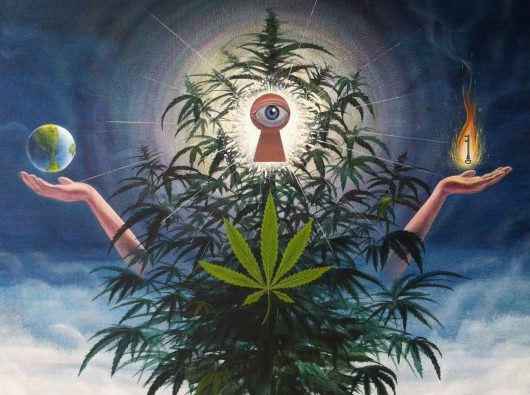Why Pot Smokers Make Great Scientists
Carl Sagan. Stephen Jay Gould. Richard Feynman. Francis Crick. Margaret Mead. This isn’t just a list of great scientists of the twentieth century, but a small sample of a very large, yet under-reported group: scientists who are pot smokers. In fact, not only did these venerable figures have a strong penchant for the good old ganja, they were also strong advocates for its legalization and general use.
The fact that giants of scientific wisdom vouch for the herb’s positive effects should be enough to convince anyone – a bit of a moot point, given this article’s audience. So let’s move on to the meat of the topic: could there be a correlation between smoking weed and an increased scientific imagination?
First off, let’s have a look at their reasons. Francis Crick, co-discoverer of DNA’s helical structure, believed that pot “removed the filters to abstract thought”. Richard Feynman maintained something similar; he used weed in conjunction with sensory-deprivation tanks (and ketamine) to supercharge his problem-solving process. The great Carl Sagan said pot gave him insights that weren’t possible otherwise. See the common link? It’s all about making connections that wouldn’t otherwise appear; about getting those neural pathways to link in new, inventive, ground-breaking ways. In fact, key evidence suggests that smoking increases frontal-lobe activity and also promotes neural connectivity, both of which are associated with creativity.
But how does creativity improve one’s ability as a scientist? After all, the scientific method is firmly rooted in fact, built on provability and repeatability of experiments, not wild hunches, tenuous connections, melting clocks or meat dresses. Except, of course, when it isn’t. Many ground-breaking discoveries started as off-the-wall ideas – Relativity (both Special and General), Newton’s theory of universal gravitation (which had its roots in his obsession with occult forces) and of course Quantum Mechanics, which is still considered a mad idea despite its logic-bending tendency to be right about everything it describes. The birth of these theories was not as a result of careful, cumulative refinements of hypotheses based on data, but of out-of-the-blue strokes of genius. Einstein, the go-to example of a genius, was particularly prone to these: it takes a certain type of mind to view both space and time as the same thing, or light as both wave-like and particle-like.
Essentially, this “creative genius” that leads to world-changing discoveries is the ability to make and see connections that others do not. The fact that weed facilitates these connections – as seen above – is perhaps the strongest testament to its ability to turbo-charge scientific imagination.
So next time you’re high and have an off-the-wall idea, don’t discard it in a fit of doubt: write it down and review it when you’re sober – it might just change the world.


